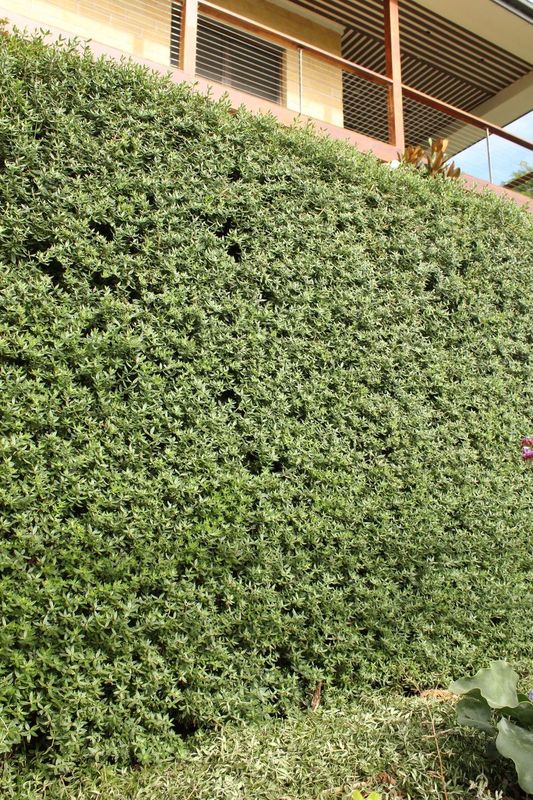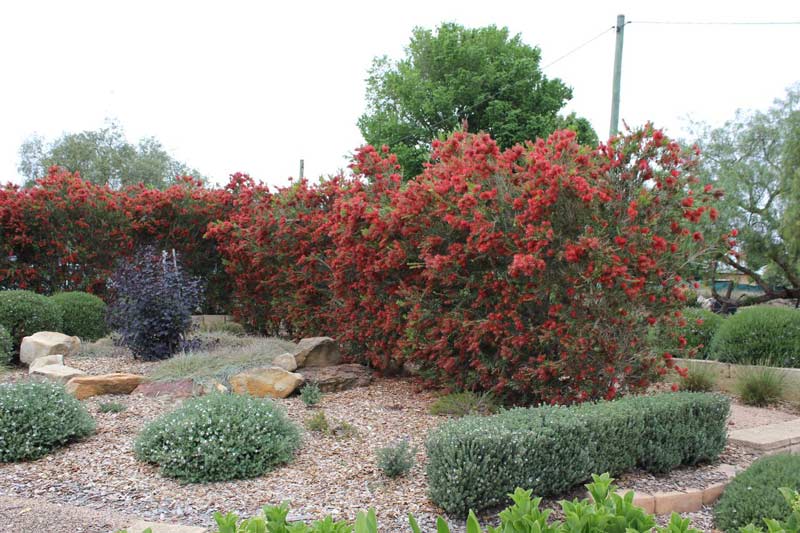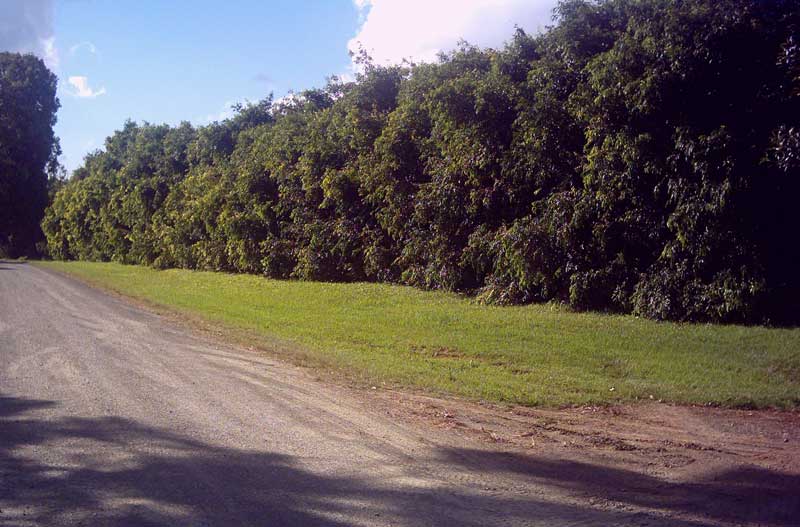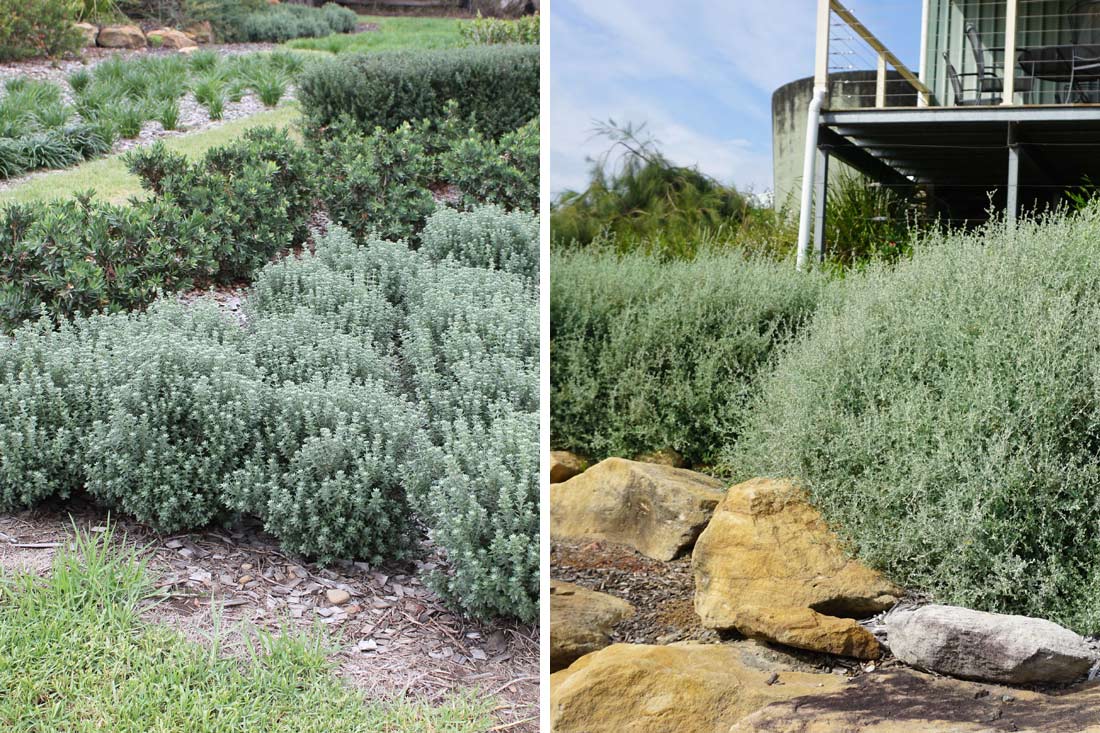Hedges are more than just attractive garden features; they can be used to effectively create and improve micro climates to foster a better growing environment for plants and a more hospitable environment for biodiversity. Here’s how hedges contribute to creating beneficial micro climates:
Wind Protection
One of the primary ways hedges improve micro climates is by providing wind protection. Tall and dense hedges act as natural windbreaks, reducing the speed and intensity of winds that can desiccate plants, cause physical damage, and increase water loss.

Naringa™ Westringia hybrid‘WES01’ PBR. https://www.ozbreed.com.au/plant-ranges/native-shrubs-groundcovers/naringa-westringia-is-the-best-medium-tall-hedging-plant-available-native-shrubs-ground-covers/
Strong winds can also create an inhospitable environment for certain beneficial organisms, such as micro wasps which have tiny feathery wings which are not built for flying in strong winds.
By planting hedges around the perimeter of a garden or specific areas, you can create a sheltered environment where plants and insects are less stressed by wind exposure. While concrete and brick walls may block a small area from the wind, they generally speed the wind up as opposed to slowing it down as plants do with their small gaps between branches and leaves.
Creating Shade
Hedges can also create shaded areas, which are essential for protecting plants that are sensitive to intense sunlight and high temperatures. By casting shadows, hedges lower the ambient temperature and reduce the risk of sunburn on delicate plants.
This is particularly useful in sunny spots where shade-loving plants, such as ferns or hostas, might otherwise struggle. Positioning hedges to provide afternoon shade can help moderate the heat and create a cooler micro climate within your garden.

Slim™ Callistemon viminalis ‘CV01’ PBR. https://www.ozbreed.com.au/plant-ranges/native-shrubs-groundcovers/slim-callistemon-is-a-great-hedge-for-tight-planting-areas-native-shrubs-ground-covers/
Reducing Temperature Extremes
The presence of hedges can buffer temperature extremes, both during the day and at night. They provide a physical barrier that mitigates the impact of cold winds in winter and hot, dry winds in summer. They also absorb sunlight rather than reflecting it, as in the case of many hardscape elements.
This buffering effect helps maintain a more stable and moderate temperature range, which is beneficial for a wide variety of plants and fauna.
Improving Soil Moisture Retention
Hedges contribute to improved soil moisture retention by reducing wind speed, which decreases the rate of evaporation from the soil surface. Additionally, the root systems of hedges, as well as their decaying spent leaves and root exudates, help to stabilise the soil, preventing erosion and promoting better water infiltration.
This is particularly important in water-scarce regions or non-irrigated positions during dry spells. It might sound counter-intuitive, but plants can actually increase the soil’s ability to intake water when compared with bare patches of soils.

Sweeper® Waterhousea floribunda‘DOW20’ PBR. https://www.ozbreed.com.au/plant-ranges/advanced-trees/sweeper-waterhousea-is-a-heavily-weeping-tree-with-large-clusters-of-white-flowers-in-summer-advanced-trees-range/
Conclusion
Hedges are versatile tools for improving and creating micro climates. They offer wind protection, shade, temperature moderation, and enhanced soil moisture retention. By understanding and utilising these benefits, gardeners and landscape designers can cultivate healthier, more resilient gardens that support a diverse range of plants.





